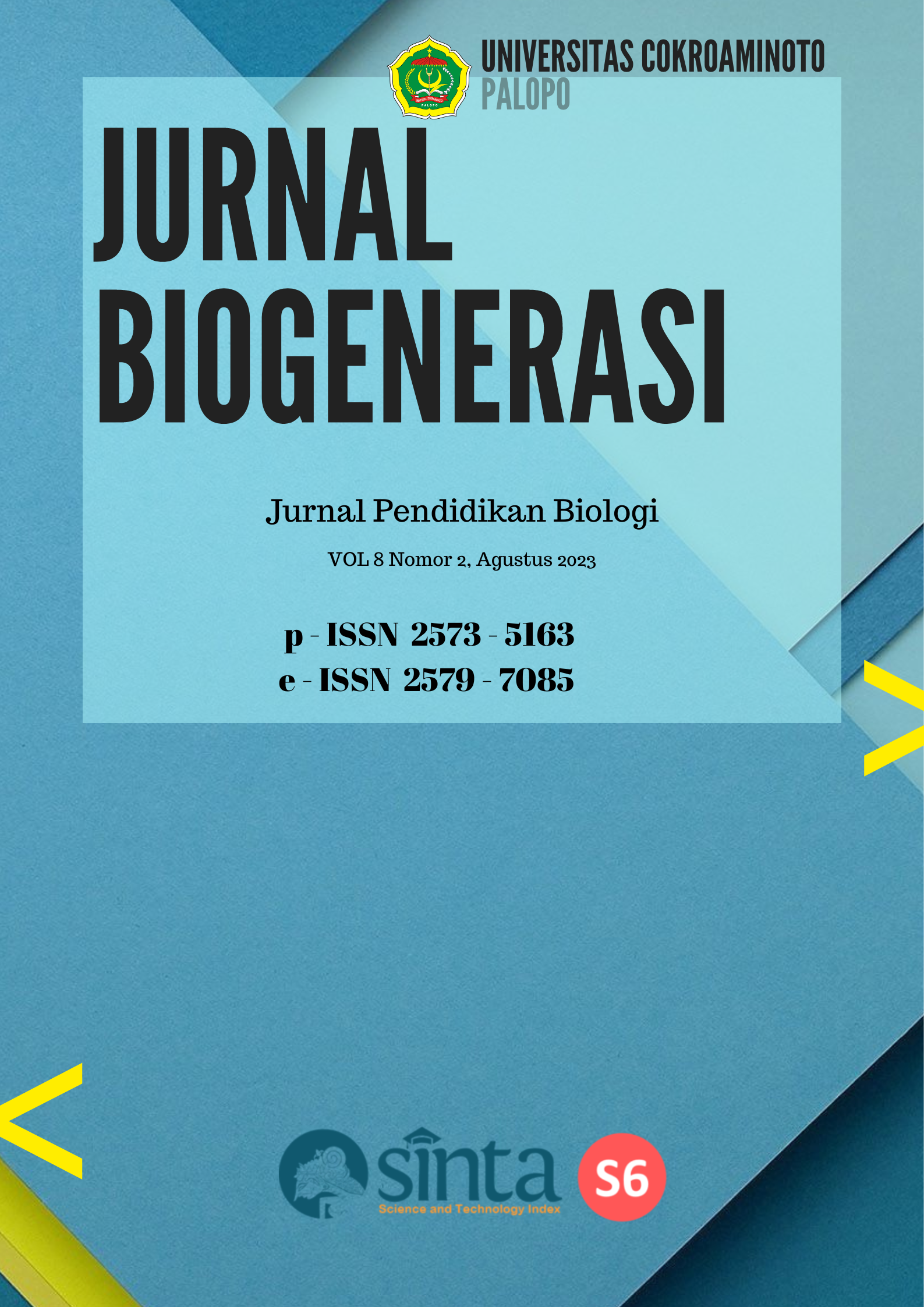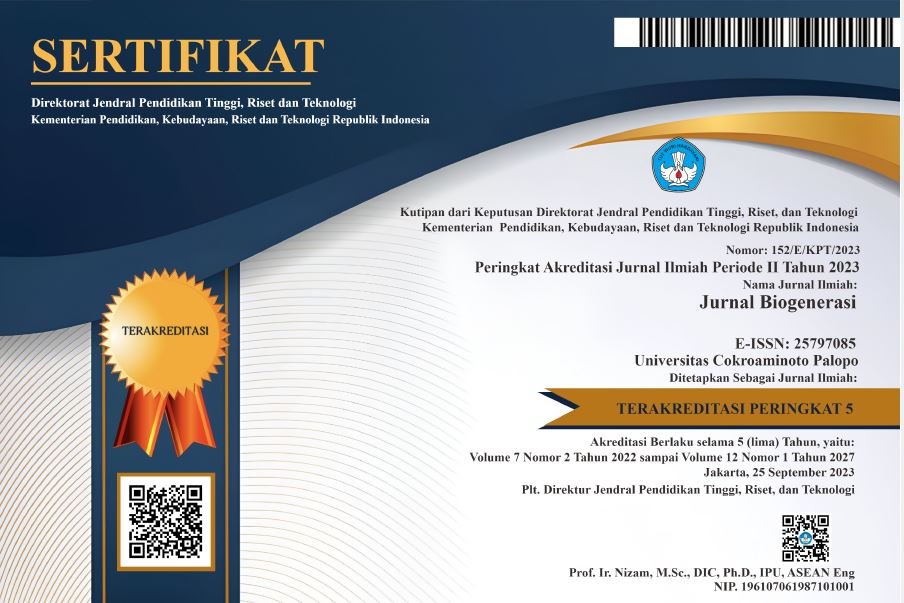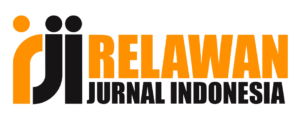PENGEMBANGAN MEDIA PEMBELAJARAN BERBASIS POWERPOINT BERBANTUAN MIND MAP PADA MATERI SISTEM PEREDARAN DARAH PADA MANUSIA KELAS XI SMA/MA
DOI:
https://doi.org/10.30605/biogenerasi.v8i2.2941Keywords:
Development, powerpoint, mind map, circulatory system in humansAbstract
The development of powerpoint-based learning media assisted by mind maps is included in research and development (R&D). min map is one of the teaching materials that makes it easy to place information into the brain and extract information from the brain during learning activities. This study aims to produce learning media based on PowerPoint assisted by a mind map on material on the human circulatory system that is valid and practical. This development research uses the Plomp development model which has three stages, namely the initial investigation stage, the development or prototyping stage, and the assessment stage. The validation results of learning media developed by media experts were 93.33% (very valid), material experts 91.38% (very valid), learning experts 98% (very valid). The result of practicality by students is 89.67% (very practical) and the result of practicality by teachers is 93.49% (very practical).
Downloads
References
Akbar, S. (2013). Instrumen perangkat Pembelajaran. PT Remaja Rosdakarya Offset.
Anyan, Ege, B., & Faisal, H. (2020). Pengembangan Media Pembelajaran Interaktif Berbasis Microsoft Powerpoint. Journal Education and Teknologi, 1(1).
Arsyad, A. (2012). Media Pembelajaran. Raja Grafindo Persada.
Buzan, T. (2013). Buku Pintar Mind Mapping. Gramedia Pustaka Utama.
Depdiknas. (2008). Panduan Pengembangan Bahan Ajara. Jakarta: Direktorat Pembinaan Sekolah Menengah Atas Dirjen Manajemen Pendidikan Dasar dan Menengah.
Karo-karo, Is. R., & Rohani. (2018). Manfaat Media Dalam Pembelajaran. 7(1). Plomp, T., & Nieveen, N. (2013). Educatinal Design Research. Eschende, University Of Twente.
Plomp, T., & Nieven, N. (2013). Educatinal Design Research. Eschende University Of Twente.
Putri, D. F., & AIn, S. Q. (2022). Pengembangan Media Pembelajaran Powerpoint Berbasis Mind Mapping pada Pembelajaran Tematik. Journal On Early Childhood, 5(1).
Qondias, D., Anu, E. L., & Niftalia, I. (2016). Pengembangan Media Pembelajaran Tematik Berbasis Mind Mapping SD Kabupaten Ngada Flores. STKIP Citra Bakti Ngada, 5(1).
Rahmati, N.L. (2013). Pengembangan Buku Saku IPA Terpadu Bilingual dengan Tema Bahan Kimia dalam Kehidupan Sebagai Bahan Ajar di MTS. Unnes Science Education Journal, 2(1).
Reza, Ellyawati, N., & Masyanah, R. (2021). Pengembangan Media Pembelajaran Berbasis Mind Mapping Dengan Powerpoint Di SMA Islam Terpadu Granada Samarinda. Jurnal Pendidikan Ekonomi UM Metro, 9(1), 1–11.
Saputri, D. (2021) Pengembangan E-Book Interaktif dalam Pembelajaran Kultur Jaringan untuk Kelas XI IPA SMA/MA Negeri Kota Pekanbaru. In Skripsi Program Studi Pendidikan Biolgi. Fakultas Keguruan dan Ilmu Pendidikan. Universitas Islam Riau.
Sinaga, C. V. R., Siahaan, T. M., & Sianipar, H. F. (2021). Pengembangan Model Pembelajaran Inovatif dengan Menggunakan Mind Mapping. Jurnal Basicedu, 5(4).
Sudjana, N & Ahmad, R. 9. (2013). Media Pembelajaran. Bandung. Sinar Baru Algesindo
Surata, K. (2020). Meta-Analisis Media Pembelajaran pada Pembelajaran Biologi. Journal of Education Technology, 4(1).
Downloads
Published
How to Cite
Issue
Section
License
In submitting the manuscript to the journal, the authors certify that:
- They are authorized by their co-authors to enter into these arrangements.
- The work described has not been formally published before, except in the form of an abstract or as part of a published lecture, review, thesis, or overlay journal.
- That it is not under consideration for publication elsewhere,
- That its publication has been approved by all the author(s) and by the responsible authorities – tacitly or explicitly – of the institutes where the work has been carried out.
- They secure the right to reproduce any material that has already been published or copyrighted elsewhere.
- They agree to the following license and copyright agreement.
License and Copyright Agreement
Authors who publish with this journal agree to the following terms:
- Authors retain copyright and grant the journal right of first publication with the work simultaneously licensed under Creative Commons Attribution License (CC BY 4.0) that allows others to share the work with an acknowledgment of the work's authorship and initial publication in this journal.
- Authors are able to enter into separate, additional contractual arrangements for the non-exclusive distribution of the journal's published version of the work (e.g., post it to an institutional repository or publish it in a book), with an acknowledgment of its initial publication in this journal.
- Authors are permitted and encouraged to post their work online (e.g., in institutional repositories or on their website) prior to and during the submission process, as it can lead to productive exchanges, as well as earlier and greater citation of published work.



.png)

